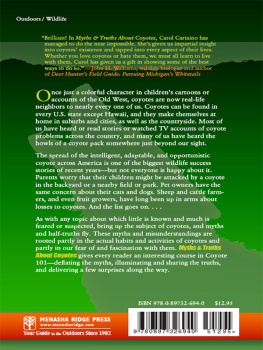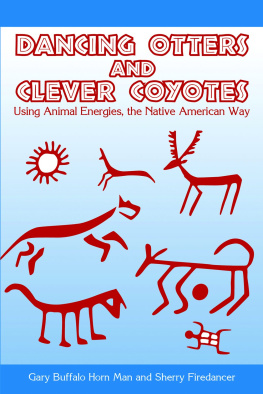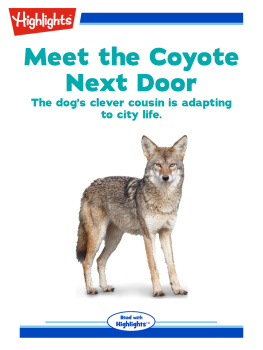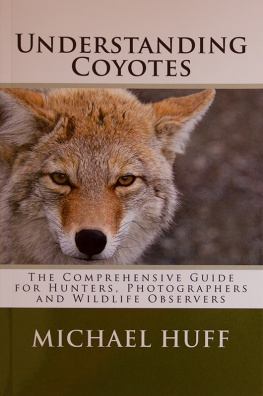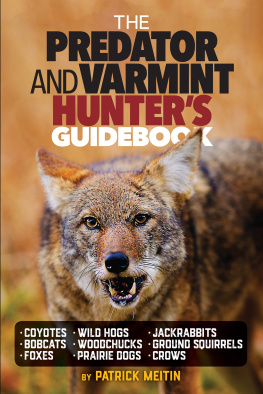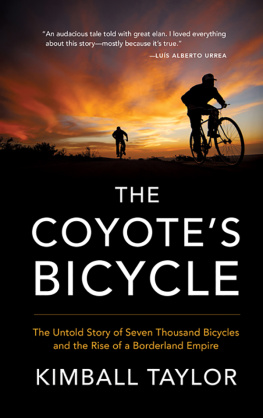Their tender foliage to the April winds.
I would rather die than see the change.
acknowledgments
B y the time you are finishing up a book, it can be hard to remember every step of the long journey that took you to this point, and every hand that hoisted you up, or helped you over a rocky spot in the path. I hope I havent forgotten anyone here.
First, thank you to my publisher, Menasha Ridge Press, for their patience and unflagging faith in this project. Especially Molly Merkle and Holly Cross (who gave me my first chance to hear editorial remarks in a soft Southern accent). Thanks, too, to Jack Heffron, who helped move the book from idea to publishing contract.
My brother Richard provided strong moral support, as well as a great deal of deeply appreciated hands-on help with the fact and illustration search. Clayton Collier-Cartaino served as a sounding board of second opinions, complete with witty remarks that helped put things in perspective at times. Susan Waddell gave very useful input on the draft manuscript. Veterinarian Dr. Robert T. Sharp and Amy Sharp Schneider provided expert feedback and advice on many issues, plus their usual irreplaceable bright-eyed encouragement.
I am grateful, too, to coyote experts such as Stanley D. Gehrt of The Ohio State University, who provided a wealth of hard-won information to mine, and Paul R. Krausman of the University of Montana, who was kind enough to serve as an expert reader. The many fine publications and Web sites of the individual states on the subject of coyotes were also invaluable. Books by other authors on coyotes, listed in the back of this book, were an inspiration and treasure trove as well. Sincere thanks, too, to the many people who endured my endless questioning and interviewing on this subject, and to outdoor writer Tom Cross of Winchester, Ohio.
Illustrations help bring a book to life, and I appreciate each and every one of the photographers and illustrators whose fine work enlivens these pages. Many of these peopleand state agenciesdid so either at no charge or at a rate that made it possible to include them. Special thanks to Russell Link of the Fish and Wildlife Department of the State of Washington, Elise Able of Fox Wood Wildlife Rescue, Inc., D. J. Hannigan, Gerald Tang, and Steve and Dave Maslowski.
This list would be incomplete without a nod to the band of coyotes to the southeast of my pole barn office, whose evening serenades first got me interested in this subject.
about the authors
C arol Cartaino, a native of New Jersey and graduate of Rutgers University (major in English and minor in biology), has had a lifetime interest in animals and the outdoors. Growing up, she had just about every pet animal known and walked home from the library every week with armloads of books on wild animals. All of her best time as a child was spent in the woods near home or on her grandparents farm in Western Pennsylvania. As an adult she has spent many happy hours hiking, camping, fishing, kayaking, and engaging in outdoor photography and nature study.
For the past 40 years, Carol has been a professional book editor and writers collaborator, working on almost every subject imaginable within nonfiction, with a strong emphasis on how-to, self-help, and reference. She has helped many authorsfrom the editors of Field & Stream and Arizona Highways to scuba divers, photographers, plastic surgeons, veterinarians, and experts on moonshine and cookeryto produce satisfying books. In her ten years as an editor in the Trade Division of Prentice-Hall, Inc., books on nature and gardening were among her specialties. In the decade that followed she was editor-in-chief of Writers Digest Books in Cincinnati. In the years since, she has been a freelance editor and book doctor for literary agents, publishers, and individual authors.
Since 1980, Carol has also served as editor and collaborator for best-selling author Don Aslett, whose books have sold a total of more than three million copies.
Carol lives with her son and many pets on a 66-acre farm in Southern Ohio, on which she can continue her nature study and listen to the coyote songs.
R ichard S. (Rick) Cartaino, of Fort Myers, Florida, was born in New York City and raised in New Jersey. His favorite job there was driving a 60-passenger commuter bus from the NJ suburbs into New York City. He moved to Florida in 1969, where he worked in retail management in the restaurant and mens clothing business. After that he went into law enforcement and is now a retired Deputy Sheriff of Lee County. Richard likes to watch and photograph wildlife; other hobbies include boating, fishing, swimming, woodworking, electronics, and gardening coupled with tending to his handsome collection of tropical plants and trees. Richard lives with his wife Marguerite and has three grown children and two grandchildren.
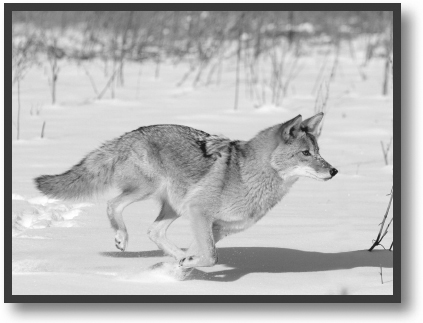
Photo by Steve and Dave Maslowski
introduction
O nce just a colorful character in childrens cartoons or accounts of the Old West, coyotes are now real-life neighbors to nearly every one of us. Coyotes can be found in every U.S. state except Hawaii, and they make themselves at home in suburbs and cities as well as the countryside.
Adult coyotes are too big to be just cute and cuddly, and they remind us of the wolves we humans went to such trouble to exterminate or remove from our surroundings. Most of us have heard or read stories, or watched TV accounts, of coyote problems across the country, and many of us have heard the yips and howls of a coyote pack somewhere right beyond our sight.
The spread of the intelligent, adaptable, and opportunistic coyote across America is one of the biggest wildlife success stories of recent yearsbut not everyone is happy about it. Parents worry that their children may be attacked by a coyote in the backyard, a nearby field, or a park. Pet owners have the same concern about their cats and dogs. Hikers and other outdoors enthusiasts who encounter coyotes in the wild wonder if they are at risk. Sheep and cattle farmers, and even fruit and vegetable growers, have long been up in arms about losses to coyotes. Deer hunters fear that the rising number of coyotes has reduced the number of deer in many places. Wildlife experts have noted that where coyotes proliferate, the graceful and beautiful red and gray foxes and other animals are harder to find now.

